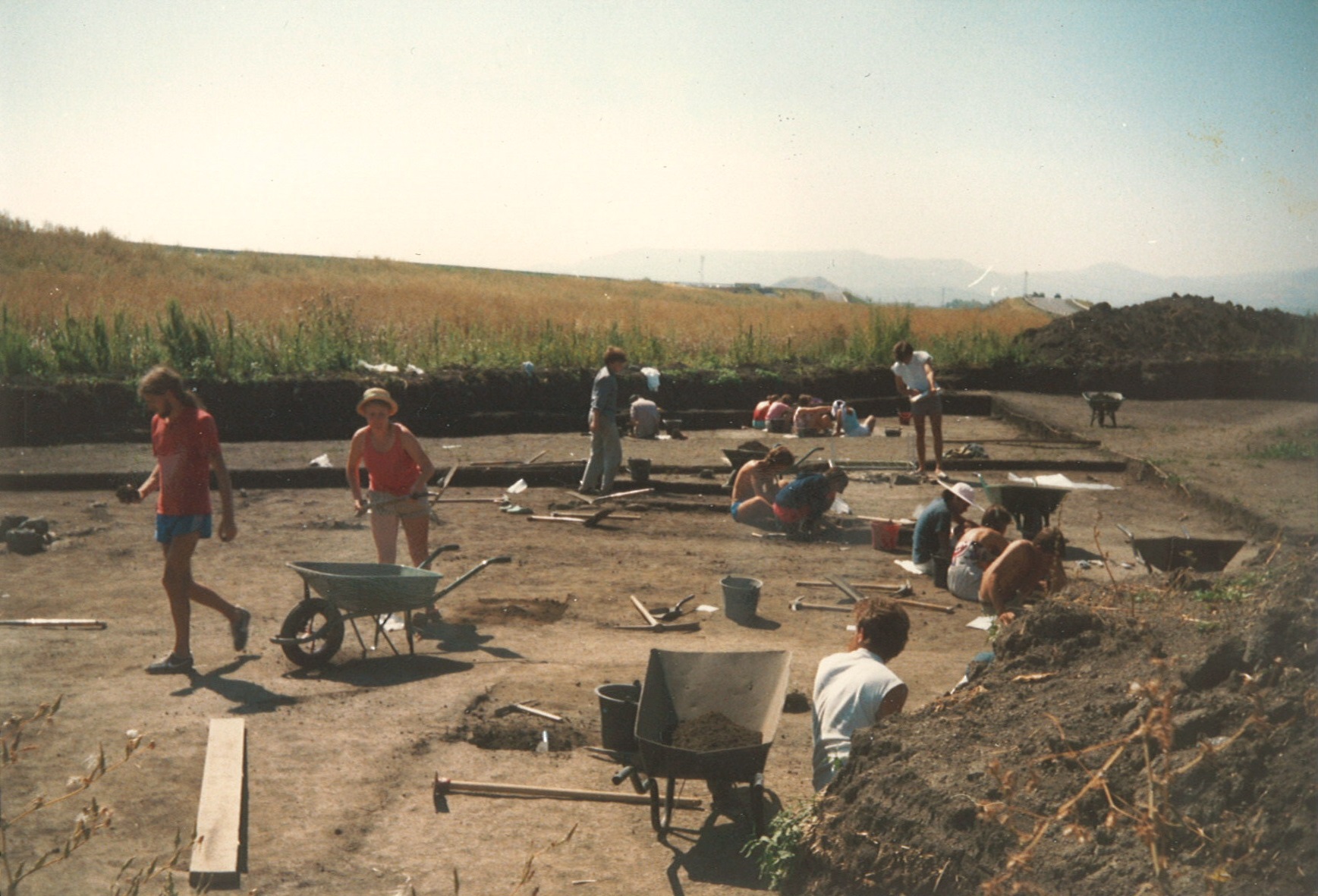On the first day of my first dig, in central France, I uncovered a dead man’s foot. It was the 1980s, the first of four seasons I spent digging a Late Iron Age/Early Roman site in the Auvergne during the hot summer months. The man had likely died in the first century CE and was probably a Roman, though the site also showed signs of continuous occupation by Gallic tribes from the 3rd century CE. The foot was all I ever recovered of him—the rest of his skeleton was buried in my neighbor’s square-meter pit. But I was glad to find it. It was an exhilarating way to start my archaeology career.
I thought of this early reckoning with the past while assembling “Material Girls: Living in the First Material World,” an exhibition of several prehistoric female figurines in Mia’s Cargill Gallery (January 15 to April 16, 2017). The discipline of archaeology taught me how to think critically about evidence, interpretation, and bias when viewing the past. We construct what we know about earlier periods by analyzing material culture (the stuff we leave behind); the written record, if there is one; skeletons and cadavers; the environment; oral history; and cultural anthropology. In trying to understand the evidence uncovered during a dig, archaeologists employ a combination of these tools to develop hypotheses that attempt to reconstruct life in the remote past. Ultimately, however, scholars’ theories often have more to do with their contemporary point of view and biases than any past reality.

A small paleolithic figure from Mia’s collection. Until recently, such statuettes were referred to as “Venus figures.”
Prehistory is the most difficult period to reconstruct. Nothing was written down, so conjuring the beliefs and motives of prehistoric people requires a lot of conjecture. When archaeologists in the 1800s began to discover ancient carved figurines of fleshy naked women, of the sort assembled in “Material Girls,” they referred to them as “Venus Figures.” They assumed that the sculptures, with their exaggerated breasts and genitalia, must have been all about sex—the “pin-up girls” of the ancient world. Of course, the name “Venus” was intended to be both erotic—Venus was the Greco-Roman goddess of love—and ironic, since the obese figures don’t conform to most contemporary ideas of the svelte and shapely classical Venus.
Archaeologists have since found naked female figurines from prehistoric cultures across the globe. They were created by societies that were both geographically and chronologically disparate, that had no contact with each other. The greatest thing they all have in common is mystery: We don’t actually know why they were made, what they were used for, or who used them. We are now more likely to admit this, to acknowledge that our theories are just that—we don’t have enough evidence to be certain. If the bias of early archaeologists led them to see the figures as sexual objects, we now believe they may have been goddess figures, gifts to the gods, representations of prized ancestors, or even dolls.
Truth be told, I am attracted to archaeology in large part because of the opacity of the past. When I first went to university, I studied political science. But I took an ancient Greek archaeology class for fun and got goose bumps when I saw a photo of the mysterious “Horns of Consecration” from Knossos, the symbol of the sacred bull. I soon switched my major to classical archaeology. I was tired of being told there was a right or wrong/true or false/multiple-choice answer to every question. I am more interested in mystery, in the grey area between black and white, than certainty. I don’t uncover physical skeletons anymore. But a good burial still makes the hair on the back of my neck stand up.




